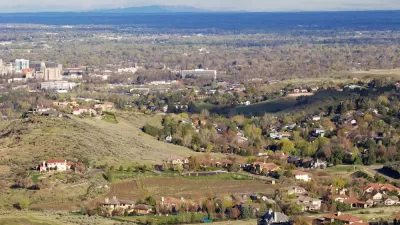Communities across the country need to dismantle exclusionary barriers and rebalance spending to invest more equitably across neighborhoods, according to this article by the Urban Institute.

"The past several weeks and months have made painfully apparent the ways in which structural racism destroys lives and livelihoods and holds us back as a nation," according to an article by Margery Austin Turner and Solomon Greene.
We have seen communities of color ravaged by both the health risks and economic fallout of the COVID-19 crisis and how police violence tracks stubborn patterns of segregation and disinvestment from Black and brown neighborhoods. If Americans of goodwill genuinely desire to tear down the systems and institutions that sustain racial injustice and inequity, we should start by reimagining the neighborhoods where we live.
Much of the discussion about systemic racism in intersection with planning and urbanism has focused on issues of safety in the public realm and the effects of exclusionary zoning and discriminatory real estate practices, this article brings the focus to the cultural and social importance of neighborhoods.
The fact that many families of color live in neighborhoods "suffering from disinvestment, deprived of quality services and amenities, and endangered by overpolicing" didn't happen by accident, according to Turner and Greene.
In response, the duo suggest a new, ambitious program of investment in underserved neighborhoods, as well as the new scale of collaboration necessary to achieve those goals.
FULL STORY: Reimagining an Antiracist America—Starting with Our Neighborhoods

Alabama: Trump Terminates Settlements for Black Communities Harmed By Raw Sewage
Trump deemed the landmark civil rights agreement “illegal DEI and environmental justice policy.”

Planetizen Federal Action Tracker
A weekly monitor of how Trump’s orders and actions are impacting planners and planning in America.

The 120 Year Old Tiny Home Villages That Sheltered San Francisco’s Earthquake Refugees
More than a century ago, San Francisco mobilized to house thousands of residents displaced by the 1906 earthquake. Could their strategy offer a model for the present?

In Both Crashes and Crime, Public Transportation is Far Safer than Driving
Contrary to popular assumptions, public transportation has far lower crash and crime rates than automobile travel. For safer communities, improve and encourage transit travel.

Report: Zoning Reforms Should Complement Nashville’s Ambitious Transit Plan
Without reform, restrictive zoning codes will limit the impact of the city’s planned transit expansion and could exclude some of the residents who depend on transit the most.

Judge Orders Release of Frozen IRA, IIJA Funding
The decision is a victory for environmental groups who charged that freezing funds for critical infrastructure and disaster response programs caused “real and irreparable harm” to communities.
Urban Design for Planners 1: Software Tools
This six-course series explores essential urban design concepts using open source software and equips planners with the tools they need to participate fully in the urban design process.
Planning for Universal Design
Learn the tools for implementing Universal Design in planning regulations.
Clanton & Associates, Inc.
Jessamine County Fiscal Court
Institute for Housing and Urban Development Studies (IHS)
City of Grandview
Harvard GSD Executive Education
Toledo-Lucas County Plan Commissions
Salt Lake City
NYU Wagner Graduate School of Public Service





























